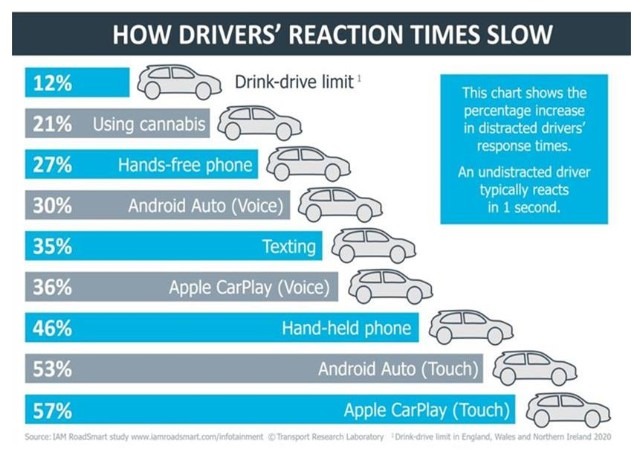Research Shows Apple Carplay, Android Auto Can Impair Drivers To Dangerous Levels
A new simulator research study conducted by IAM RoadSmart has found that interacting with Android Auto and Apple CarPlay can impair driving performance to potentially dangerous levels. The study results show that the latest in-vehicle infotainment systems impaired driver reaction times behind the wheel more than alcohol and cannabis use. According to the researchers, reaction times at motorway speeds increased average stopping distances between four and five car lengths.The study showed that drivers took their eyes off the road for as long as 16 seconds while driving and using touch controls. The use of those touch controls resulted in driver reaction times that were worse than when people are texting and driving. Researchers behind the study are now calling for action stating that updated, consistent standards are required to minimize driver distraction.
The numbers offered by the study show that a driver's reaction time slows when they are at the drink-drive limit by 12 percent. When using cannabis, driver reaction time slowed by 21 percent, and when using hands-free phones, reaction time slowed by 27 percent. According to the researchers, using touch-based Android Auto reduced driver reaction time by 53 percent.

Drivers using Apple CarPlay via touch controls had their reaction time reduced by 57 percent. The numbers look much better, but still not good when using voice commands to control Android Auto with a 30 percent reduced reaction time. Apple CarPlay voice commands reduced reaction times by 36 percent in the study.
Key takeaways in the study include that participants underestimated how long they were looking away from the road by as much as five seconds. These touch controls for infotainment systems significantly increased reaction times, and infotainment systems are getting more complex in vehicles. Researchers are encouraging employers of individuals who drive for work to review their advice and policies after the research along with asking for standards.
